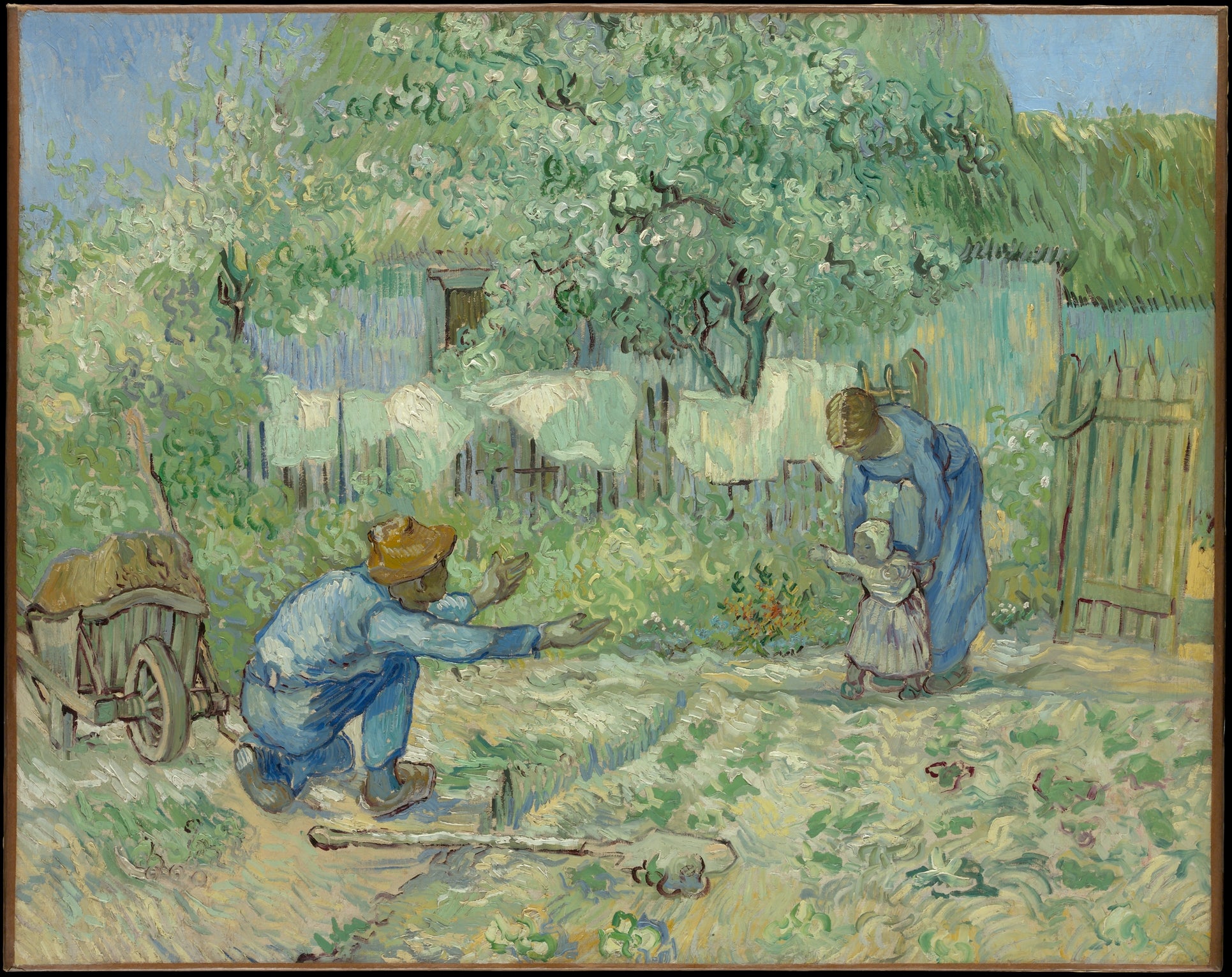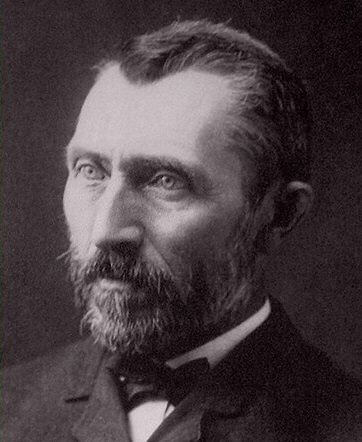
First Steps, after Millet
Between fall 1889 and early 1890, during his voluntary confinement at the asylum in Saint-Rémy-de-Provence, Vincent van Gogh embarked on a deeply personal and imaginative project: he created twenty-one painted “copies” of works by Jean-François Millet, the French realist painter he revered as a master of rural life and moral gravity. But Van Gogh did not consider these works mere reproductions. Rather, he likened them to a musician’s interpretation of a score—faithful in structure, yet expressive in tone. They were, in his words, "translations", reimagined with his own palette and feeling.
For this particular painting, completed in January 1890, Van Gogh worked from a photograph of Millet’s tender composition First Steps, which had been sent to him by his brother Theo. Using a squared-up grid, Van Gogh carefully transferred the outlines onto canvas, preserving the central image of a father reaching out to his child as the mother guides the little one forward. The scene, full of warmth and familial intimacy, resonated deeply with Van Gogh, whose own life had been marked by solitude and longing for connection.
But it was in color that Van Gogh truly made the work his own. Whereas Millet’s original was monochromatic, Van Gogh applied bold, expressive hues to the figures and setting, transforming the gentle moment into something luminous and emotionally immediate. The earthy tones of the rural home, the father’s outstretched arms, and the open sky beyond all pulse with life, capturing not just the action of first steps, but the profound human emotions behind them—hope, trust, and the quiet heroism of everyday love.
In this act of creative homage, Van Gogh bridges time and medium. By reinterpreting Millet’s print with vibrant brushwork and color, he reasserts the timelessness of simple human gestures and affirms his belief in art’s power to speak across generations. Created during one of the most introspective and uncertain periods of his life, this painting is not just a copy—it is a personal meditation on tenderness, renewal, and the enduring strength of the human spirit.
Choose options


First Steps, after Millet
About Artist

Vincent van Gogh
